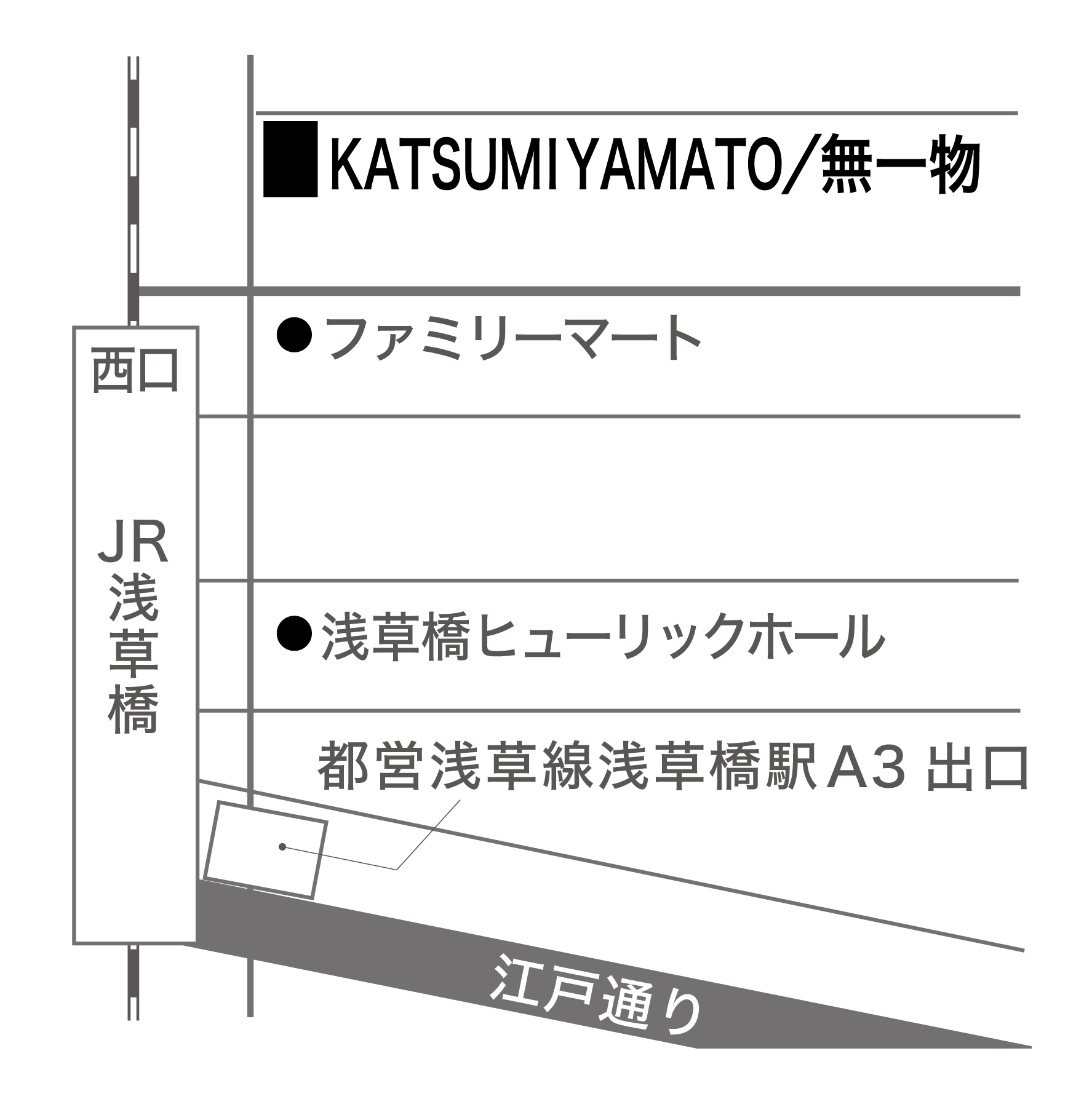ヨコサカタツヤ個展「おわり」2022/2/8(Tue)-2/26(Sat)
Exhibition
ヨコサカタツヤ個展
「おわり」
今回”初”の個展となる”おわり”を開催させていただきます。
ヨコサカタツヤは群馬県に生まれ、現在東京を中心に作品を発表。
突然の終わりを迎えたようなアニメシリーズや、いわゆるフィナーレを迎えたアニメは、作者が同じでなくても別シリーズとして書き直されることがある原作へのオマージュのようなもの。アートの世界では、これをシミュレーショニズムやアプロプリエーションと呼ぶことがある。ヨコサカの作品は、アニメシリーズの続編や継続作品と解釈していただければ理解が進む。
ヨコサカはアニメやマンガのオタク文化から生まれた共通言語の意味を考えることに作家生活の大半を費やしている。
キャンバスにセル画の手法を取り入れた彼の絵画は、常にアニメのメインストリームで語られたある物語の余韻、あるいは続きを描いているように見える。
彼は、共通言語は純粋なオリジナル作品からしか生まれないと信じている。
これらの言語は、スピンオフや続編の出発点として使われることがある。
同時に、この現代において、純粋なオリジナル作品を生み出すことが可能かどうかについては、懐疑的である。
石ノ森章太郎の漫画『サイボーグ009』(漫画、原作発行1964年7月)の神々との戦いは完結していない。
しかし、石ノ森の死後、『サイボーグ009』とは全く別の作品『仮面ライダーアギト』(特撮テレビドラマ作品、原作2001年1月公開)でその続きが語られたと言われている。
漫画の世界では、『新世記エヴァンゲリオン』(アニメ、原作1995年10月~1996年3月)は『風の谷のナウシカ』(漫画、原作1982年2月~1994年3月)の続編、
エヴァは『ナディア The secret of Blue Water』(アニメ『ルパン三世 カリオストロの城』(漫画、初出1967年8月)は『ハウルの動く城』(アニメ、2004年11月)が続編であり、『ナディア』は『未来少年コナン』(アニメ、初出1978年4月~10月)の続編である。)
ヨコサカ作品は、セル画のようなグラフィックでありながら、ストリートアートのような独特のタッチを持っている。
彼の描くキャラクターは、箪笥や冷蔵庫、食器棚やベッドフレームに貼られた古いシールのようなもので、時間が経つと本来の輝きが失われてしまうのだ。
ヨコサカの作品は、私たちが散歩しているときに見かける落書きやステッカー(おまけシール)が、ヨコサカ作品を通して、再び浮かび上がってくるような印象を受ける。
ヨコサカの作品には、アニメの共通言語だけでなく、日本のポップカルチャーへの言及が多く見られる。そのひとつが、「レディメイド」という考え方である。
彼は、自分の作品に既製品のような感覚を伝えようとしていると述べている。何かを作るのではなく、何かから作る。
例えば、“Made in Japan “や “Take me Higher “は、プラモデルの箱を再現しているようなもの。“貴重品が入っている箱が賞品になり、最も収集価値のあるアイテムになることがあります。江戸時代にヨーロッパに送られた貴重な美術品を包んでいた浮世絵が、美術品と同じように大切に保管されるとは、日本では考えられなかった」とヨコサカは述べる。
メイド・イン・ジャパンとは、1988年に公開された映画『ぼくらの七日間戦争』にちなんだ言葉。
また、プラモデルの箱の形や大きさ、ラベルが特徴的なパッケージングになっている。日本の制服になじみのある視聴者なら、すぐに懐かしいと感じるはずだ。
また、キャラクターの表情にも日本のカワイイ文化が参照されている。
制服は個人の表現の自由がない時代を描いているが、(実家暮らしの10代の)「古き良き時代」を感じさせてくれる。
ヨコサカの作品は、昔のアニメの世界を垣間見る小さな窓のようなものだと思う。
死後も、私たちの記録が残り、あなたの元に届き、あなたの想像の中で蘇ることを願います。
今回が“初”の個展となる“おわり”では数百年後、あるいは何万年後の地球で起こりうる可能性を秘めた作品が並ぶ。
今、私たちが目にするヨコサカ作品は発掘された壁画や遺跡のように、過去の地球に残された美術品を鑑賞するかのような目で見ていただきたい。
今回の個展“おわり”では、ほぼ水の中に沈んだ地球で生き残ったヨコサカがシェルターでの生活を余儀なくされた様を表現した。この地球に残された人間はヨコサカただ一人。自分にできることは日本のアニメ文化を継承してゆくこと。その使命を全うしようと奮闘する、一人の男を描いた展覧会である。
This will be my first solo exhibition, “OWARI”.
Born in Gunma Prefecture, Japan, Yokosaka Tatsuya currently lives and works in Tokyo.
Anime series that seem to come to an abrupt end, or the so-called finale, are a kind of homage to the original work that may be rewritten as a separate series even if the author is not the same.In the art world, this is sometimes referred to as simulationism or appropriation.His works can be better understood if they are interpreted as sequels or continuations of the anime series.
Yokosaka has spent most of his writing life trying to make sense of the common language that has emerged from the otaku culture of anime and manga.
His paintings, which incorporate the technique of celluloid on canvas, always seem to depict the aftermath or continuation of a certain story told in the mainstream of animation.
He believes that a common language can only come from purely original works.
These languages are sometimes used as a starting point for spin-offs or sequels.
At the same time, I am skeptical about whether it is possible to create purely original works in this modern age.
The battle against the gods in Shotaro Ishinomori’s manga “Cyborg 009” (manga, original published July 1964) has not been completed.
However, after Ishinomori’s death, it is said that the continuation of the story was told in “Kamen Rider Agito” (a tokusatsu TV drama work, original story released in January 2001), a completely different work from “Cyborg 009”.
In the world of manga, “Shinseiki Evangelion” (anime, original story October 1995 – March 1996) is a sequel to “Nausicaä of the Valley of the Wind” (manga, original story February 1982 – March 1994), and
Eva is a sequel to “Nadia: The Secret of Blue Water” (the anime “Lupin III: The Castle of Cagliostro” (manga, first published in August 1967) is a sequel to “Howl’s Moving Castle” (anime, November 2004), and “Nadia” is a sequel to “Mirai Shonen Conan” (anime, first published in April-October 1978)). It is a sequel).
Yokosaka’s works are celluloid-like graphics, but with a unique touch of street art.
The characters he draws are like old stickers on chests, refrigerators, cupboards, and bed frames that lose their original luster over time.
His works give the impression that the graffiti and stickers (extra stickers) that we see when we take a walk are brought to life again through Yokosaka’s works.
In Yokosaka’s work, there are many references to Japanese pop culture as well as the common language of anime. One of them is the idea of “readymade”.
He states that he is trying to convey a ready-made feel to his work. Instead of making something, he makes something from something.
For example, “Made in Japan” and “Take me Higher” are like reproductions of plastic model boxes.” Boxes containing valuables can become prizes and the most collectible items. In Japan, it was unthinkable that ukiyo-e, which wrapped valuable works of art sent to Europe during the Edo period, would be kept as carefully as works of art,” states Yokosaka.
Made in Japan” is a term associated with the movie “Our Seven-Day War” released in 1988.
In addition, the shape, size, and labeling of the plastic model boxes are characteristic of the packaging. Viewers who are familiar with Japanese uniforms will immediately feel nostalgic.
There are also references to Japanese kawaii culture in the facial expressions of the characters.
Seifuku depicts a time when individuals did not have freedom of expression, but it gives a sense of the “good old days” (of teenagers living at home).
I think Yokosaka’s work is like a small window into the world of old anime.
I hope that even after death, our records will remain, reach you, and come back to life in your imagination.
In “The End,” his first solo exhibition, Yokosaka’s works are lined up with the possibility of what might happen on the earth in a few hundred years, or even tens of thousands of years.
I would like you to look at Yokosaka’s works as if you were looking at a piece of art left behind on the earth in the past, like an excavated mural or archaeological site.
In this solo exhibition, “The End,” I expressed how Yokosaka was forced to live in a shelter after surviving on a planet almost submerged in water. Yokosaka is the only human left on this earth. All I can do is to carry on the Japanese anime culture. This exhibition depicts one man’s struggle to fulfill this mission.
会期 2022/2/8(Tue)~2/26(Sat)
open 12:00~19:00 日・月曜・23日祝日 休廊




Access
〒111-0053 東京都台東区浅草橋4丁目1-2
ミツボシビル4F
【TEL】03-5687-6787
【MAIL】info@katsumiyamatomuichibutsu.com
【営業時間】
月〜土 12:00~19:00
日祝:休廊
*各展覧会によって休廊日が異なりますのでご注意くださいませ。

Contact Us
東京都台東区浅草橋4丁目1-2 ミツボシビル4F
TEL:03-5687-6787
info@katsumiyamatomuichibutsu.com
【営業時間】
月〜土 12:00~19:00
日祝:休廊
*各展覧会によって休廊日が異なりますので
ご注意くださいませ。

